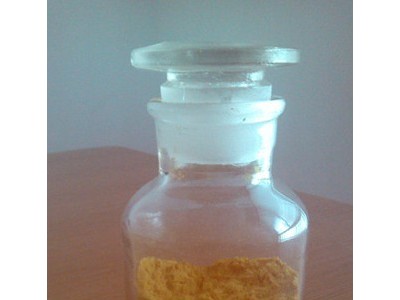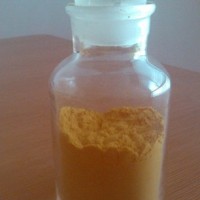简介:橄榄苦苷主要来源油橄榄树,可以保护皮肤细胞不受紫外线伤害,防止紫外线对皮肤膜脂质的分解,促进纤维细胞生成胶原蛋白,减少纤维细胞胶原酶的分泌,阻止细胞膜的抗聚糖反应,从而高度保护纤维细胞,自然抵御由氧化而导致肌肤的破坏,更免受UV紫外线伤害,有效维持肌肤柔嫩与弹性,达到护肤、嫩肤的。提取来源:油橄榄叶英文名称:Oleuropein分子式:C25H32O13分子量:540.51熔点:87-89℃质状:绿色、棕黄色粉末检测方式:HPLC储运:密封,避光,防潮包装:1KG/铝膜袋,25KG/纸板桶用途:1. 制药。用于制造治疗病毒、细菌、原生动物类、寄生虫和吸血虫等所引起的疾病的新药,和治疗感冒的新药。2. 。在欧美等国家,橄榄叶提取物主要作为膳食补充剂,用于调节免疫力。3. 护肤品。高含量的橄榄苦苷主要用于护肤品,可以保护皮肤细胞不受紫外线伤害,有效维持肌肤柔嫩与弹性,达到护肤、嫩肤的。注意事项:1. 本品暴露在空气和阳光下会分解,建议在避光条件下低温密封保存。2. 易溶于乙醇、丙酮、冰醋酸,5%NaOH溶液等,可溶于水、丁醇、乙酸乙酯、醋酸丁酯等。OleuropinDescription Olive leaf is the leaf of the olive tree (Olea europaea). While olive oil is well known for its flavor and health benefits, the leaf has been used medicinally in various times and places. Natural olive leaf extracts(OLE), are now markered as anti-aging, immunostimlators, and even antibiotics. Clinical evidence has proven the blood pressu re lowering effects of carefully extracted Olive Leaf Extracts. Bioassays support its antibacterial, antifungal, and anti-inflammatory level. A liquid extract made directly from fresh olive leaves recently gained international attention when ot was shown to have an antioxidant capacity almost double green tea extract and 400% higher than Vitamin C.Source: Olive leafCountry of origin: ChinaCAS No: 32619-42-4Molecular weight: 540.51Melting point:87-89 Degrees CelsiusAppearance: Green or Brown-yellow powderSpecifiction:10%, 20%,30%,40%Testing method:HPLCFunction1. Broad-spectrum antimicrobial activity: it has a good effect on the infecious and malignant micro-organisms. Olive leaf extract provides a battle with the microbes safe and effective treatment. The study also proved that the extract of the human body only attack pathogens and symbiotic intestinal bacteria harmless, which is its another advantage beyond the man-made antibiotic.2. Strengthen the immune system: Some physicians have successfully used olive leaf extract medically unexplained illnesses, such as chronic fatigue syndrome and fibromyalgia treament of patients. This may be the result of direct stiumlation of the immune system.3. Cardiovascular





